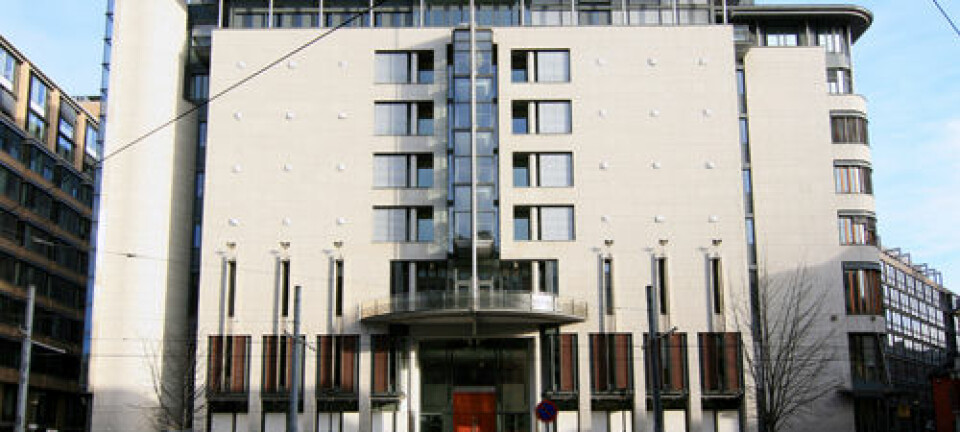
Molenbeek: One of several Jihadi hotspots in Europe
OPINION: To call the Brussels suburb Molenbeek a terrorism capital is an exaggeration at best. Focusing on local socio-economic factors obscures European jihadism’s transnational nature.
Denne artikkelen er over ti år gammel og kan inneholde utdatert informasjon.
In the wake of the Paris attacks the Brussels suburb of Molenbeek is being portrayed as the ‘terrorism capital’ of Europe. Residents from this area have been linked to several jihadi plots nationally and abroad and are part of Europe’s largest contingent of foreign fighters in Syria and Iraq, adjusted for population. The media has focused on the role of gritty suburbs in an attempt to explain why Molenbeek has produced so many terrorists.
To speak of Molenbeek as Europe’s terrorism capital is an exaggeration at best. The focus on local socio-economic specificities obscures the transnational nature and drivers for European jihadism. Belgian jihadi networks are intimately intertwined with counterparts in Europe and other regions and their actions are strongly shaped by events beyond Belgium.
Experts have highlighted several factors contributing to Belgium’s jihadi challenge:
- Federalism: Problems of coordinating security among the states increase opportunities for extremists to move around avoiding detection (Edwin Bakker).
- Immigration: Poor integration and identity issues among the North African Muslim population of the country’s city suburbs cause radicalization (Montasser Alde’emeh).
- Criminal environment: Underground networks for the illegal weapons trade draw militants to the country (Claude Moniquet).
- Actor landscape: The dynamics of the local extremist community, in particular the presence of charismatic and effective leadership figures (Pieter Van Ostaeyen).
All these factors have clearly influenced Belgian jihadism, but the actor landscape and especially its transnational dimension cannot be emphasized enough.
Several terroism plots
Jihadi networks emerged in Belgium in the mid-1990s, when members of Algerian terrorist group the GIA settled there. Several of them, such as Farid Mellouk, had escaped anti-terrorism investigations in France following the attacks of 1995. After ex-GIA members joined al-Qaeda towards the end of the 1990s, cells in Belgium began operating under the umbrella of Bin Laden’s organization. Belgium became home to many members of the Moroccan Islamic Combatant Group (GICM), — the al-Qaeda affiliate that supplied operatives for the 2004 Madrid bombings.
This network operated out of the city of Maaseik near the Dutch border. Belgium also experienced several terrorist plots, including a plan by an al-Qaeda-run terrorist network, coordinated by Djamel Beghal, to bomb an American airbase. Beghal was arrested in Dubai in 2001 and imprisoned in France. In prison, he met and influenced the Kouachi brothers and Amedy Coulibaly, who later attacked the offices of Charlie Hebdo and a Jewish supermarket in Paris.
The networks uncovered in Belgium interacted and cooperated with counterparts in other European countries such as France, the Netherlands, and the UK, as well as with terrorists groups located in conflict zones, such as Afghanistan–Pakistan, Iraq, Syria and Yemen.
Towards the end of the 2000s, a new generation of jihadis in Europe, the Islam4/Sharia4 movement set up shop in Belgium. This new network was a collaboration between Belgian extremists, led by Fouad Belkacem, and the followers of Omar Bakri and Anjem Choudary in London.
Recruits among students and middle class
When studying jihadi terrorism, we tend to look for local explanations, such as socio-economic backgrounds of plotters and the suburb they hail from, or some aspect of flawed local policies - such as security, law, lack of integration.
Although jihadi hubs are oftentimes located in socio-economically deprived areas, this is not always the case. For instance, the new generation of jihadis in Europe (Islam4/Sharia4) recruited many members among university students and in middle class environments in the UK.
Furthermore, jihadi hotspots have emerged in countries with diverging immigration policy. While France has focused on assimilation, Britain has pursued multiculturalism to a larger extent. Yet, both countries have similarly sizable extremist networks and foreign fighter contingents, and are facing the same high level of terrorist plotting. Similarly, significant jihadist networks have emerged in Scandinavian welfare states. Even Norway, with very few problems related to immigration and integration, has produced more than eighty foreign fighters who travelled to Syria and Iraq, which adjusted for population size is a very high number.
Finally, jihadi hubs have emerged in other parts of Belgium, such as the aforementioned Maaseik close to the Dutch border. This relatively small, sleepy town of some 25,000 inhabitants, which lacks any gritty suburbs, became a central hub and meeting place for al-Qaeda’s Moroccan affiliate, GICM.
Social ties and loyalty are driving forces
When I started studying jihadism in Europe many years ago, I too believed that low social and economic status combined with poor integration were the core problems. I have since come to realize that these issues are more complex. The European jihadi underground revolves around experienced jihad entrepreneurs, who recruit and socialize misfits and drifters, politicize grievances they may have, and employ them as tools for transnational militants, such as al-Qaeda and IS. Social despair may create a hospitable environment for recruitment, but in many cases social ties and loyalty to entrepreneurs are sufficient driving forces.
From this perspective, the Belgian jihadi situation seems to be affected by chains of unfortunate coincidences, which led to a concentration of militants enjoying particularly high status and authority among jihadis (e.g. Farid Mellouk, the al-Haski brothers, Malika el Aroud, Moez Garsallaoui). These high-profile activists attracted loyal supporters, creating the critical mass needed to spark further recruitment.
The investigation of the recent Paris attacks in November 2015 will probably reveal contacts and motivations far beyond Molenbeek and Belgium. We will learn that the terrorists involved were drawn into extremist ideology and militancy by charismatic leaders and coordinators within extensive transnational networks.
Petter Nesser is a senior researcher in the Terrorism Research Group, at the Norwegian Defence Research Establishment.



































